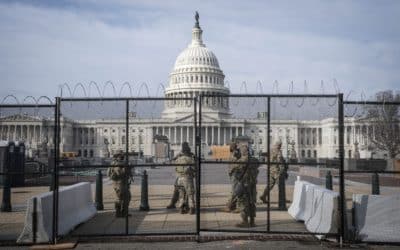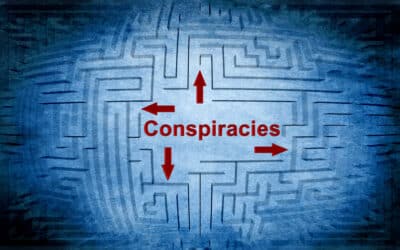H.W. Brands’ America First: Roosevelt vs. Lindbergh in the Shadow of War is an informative and well-needed account of the vitriolic debates that preceded American entry into the Second World War. Brands’s treatment is a welcomed addition to a field that, since the election of Donald Trump, has often relapsed into whiggish ahistoricism and presentism. Brands’s America First rescues an earlier historical consensus about the “Great Debate,” the name given to the rancorous public exchanges concerning American entry into World War II, one that presents the period before American entry into the war as a tragedy, replete with slanderous accusations of disloyalty, propaganda, deceit, and rank civil rights abuses on the part of the U.S. government.
Brands’s goal then is not to pile more dirt onto the grave of Charles Lindbergh and the “isolationism” he represented. Nor is his objective to serve as a polemic against Roosevelt. Rather, Brands’s work recenters earlier material and analyses that were once common to the historiography of the interwar period but have been sidelined by recent works that elevate the status of fringe political actors like the German American Bund, the Silver Shirts, and a coterie of other domestic fascists, thereby obscuring the substance of the Great Debate.
Brands’s purpose for the book is initially elusive, as his introduction is devoid of a contemporary lead-in, a welcomed change from recent offerings that seek to draw a straight line between the interwar period and the Trump era, usually at the cost of exaggerating the historical presence of the illiberal right and their role in the Great Debate. Instead, Brands’s purpose reveals itself through his narrative, emphasizing the deeper motivations for Lindbergh and his “isolationist” camp, the escalating rhetoric between them and the interventionists, as well as the latter’s often-illicit tactics.
His source body is comprised of well-known primary sources such as speeches, newspaper editorials, FDR’s fireside chats, Lindbergh’s personal journal, and established secondary source literature. While such sources make for an easy read, devotees of the period will, unfortunately, find few new insights or newly marshaled archival sources. Brands splits his content into five parts and seventy-two brief chapters, often focusing on a single speech or exchange from one of his primary subjects. Brands caps the body of his book with an epilogue that is considerably more analytical than his preceding material, a coda that presents the Great Debate as more relevant than ever due to the overextension of American foreign commitments and domestic issues.
America First begins years before the phrase entered American political vocabulary. Brands begins his narrative with a treatment on Lindbergh’s life during and after the kidnapping and murder of his son, Charles Jr. Brands juxtaposes Lindbergh’s tragedy against FDR’s adroit political ascendence. Framing his study in this way, Brands offers insights into his two primary characters and aspects of their lives and personalities that would shape their often-venomous debate just over the horizon. Lindbergh’s disdain for an often-callous American press drove his family to take refuge in Europe and informed his noninterventionist position. Similarly, the reader also learns of FDR’s keen political eye on the issue of American foreign policy in a world stumbling into war and the shrewdness of his politics to know enough to stay out of Europe’s affairs, at least early on.
Brands fills his chapters with detours from his main two characters, coloring in American domestic politics, popular attitudes on noninterventionism, and developments in Europe. On the domestic side, Brands often skillfully does so by narrating Lindbergh’s interactions with prominent noninterventionists such as former President Herbert Hoover, Senators William Borah and Gerald Nye, as well as through his overseas interactions with U.S. Ambassador Joseph Kennedy. Through these interludes, Brands treats the reader to a crash course on domestic reaction to the Great War as the seedbed for American noninterventionism, including public outrages to propaganda, the loss of American life, the duplicity of Allied leadership, and the widespread belief in profiteering on the part of arms manufacturers and big banks. Brands’ breezy style, while admittedly at times disorienting, provides a novice reader with a basic understanding of the noninterventionist position ahead of the beginnings of the Second World War, a framing that other scholars and writers have ignored or deemphasized in recent years.
Brands affords the same coverage to FDR and the growing interventionist camp. Similarly, for those new to the subject matter, Brands walks the reader through FDR’s initial reluctance to involve the United States in Europe’s growing tensions. In this way, Brands’s early content on FDR is a valuable corrective to folk-histories prevalent in later revisionist interpretations that hold that he decided to involve Americans in Europe’s political affairs from his earliest years in office. Rather, through his FDR material and detours into his relationships with members of Congress, certain figures in the national security bureaucracy like William “Wild Bill” Donovan, and chiefly Winston Churchill, the reader is informed of the once reluctant, then incremental, and then deliberate American drive into World War II.
Brands’s method provides one with the panoply of overlapping arguments supplied by the interventionists, from high-minded idealism to geopolitical realism to hemispheric self-interest. His method then illustrates how FDR and those in his orbit skillfully used rhetorical incrementalism to disarm their noninterventionist opponents while taking affirmative steps into entering the war. Brands notes that FDR’s earliest efforts for American aid to the Western Allies were sold to the public as general preparedness and hemispheric deterrence. Brands astutely notes that by the time of the Neutrality Acts’ incremental repeal, “Lindbergh’s emphasis on hemispheric defense had sunk in” and that FDR could then make the case to the American press that the U.S. Navy was “guarding the hemisphere rather than ships going to Britain.” Brands shows how the war of words between the noninterventionist and interventionist camps allowed the latter to use common ground between them, not to arrive at a consensus but to drive their own agenda.
In these later chapters, Brands highlights the back and forth between Lindbergh and his detractors, affording the reader a window into the venomous and duplicitous nature of the Great Debate. Springing between Lindbergh and FDR, Brands often drives his narrative with an escalating war of words between these two and their boosters in the press and politics, with the latter making regular challenges to the loyalty of the noninterventionists, and the former’s descent into openly antisemitic commentary, a diversion that culminated in Lindbergh’s infamous Des Moines speech on September 11, 1941. Lastly, Brands notes that by the summer of 1941, FDR’s public statements of caution on American involvement, paired with escalating rhetoric concerning the war at large made his position “difficult to pin down,” but one that contained an undeclared U.S. naval war against Germany “that Roosevelt had not revealed to the American public.”
Brands’ later chapters illustrate how the Great Debate moved beyond a mere war of words but became one of deeds, as often illicit and covert actions by the American and British governments constrained the terms of debate. Underneath the war of words, Brands avails the reader of the illegal covert actions taken by the Federal Bureau of Investigation and the British Security Co-ordination, an outfit of British intelligence meant to influence American public opinion towards the Allies, and, by mid-1941, actively sought to damage the public standing of American noninterventionists. Whether on the issue of FDR’s half-truths or blatant illegal activity on the part of the American and British governments, Brands does not present to the reader a triumphalist account painted in black and white, but the tragedy hued in gray.
Brands’ book has much to offer for those who know little about the subject matter. His choice of sources is straightforward, and his narrative is economically paced, often cleverly interwoven, and strategically apportioned for casual readers. As noted above, his narrative touches on the nuances of the noninterventionist and interventionist positions, the incremental developments thereof, and the more tragic elements contained in both. Be it Lindbergh’s antisemitic views or FDR’s willingness to use deception and subterfuge, Brands presents both men with their warts in plain view. His book is a worthy introduction for those unfamiliar with the era.
However, America First is of limited utility for those well-versed in the subject matter. Brands’ book is a synthetic work of narrative history built on earlier scholarship and published primary sources. Those well-read on the subject may become frustrated with Brands’ frequent use of lengthy quotes, breezy style, often sparse analysis, and narrow scope and source base. The book, and therefore the reader, would have benefited from more analytical pauses thereby highlighting the significance of inflection points during the Great Debate.
Yet, as a narrative history, Brands’ treatment of this subject matter is valuable considering the recent turn in the historiography. In recent years, motivated by a desire to explain the Trump era and the country’s supposed return to “isolationism,” scholars and pundits have used Lindbergh’s antisemitic views and their adjacency to fringe political actors as evidence of an inchoate domestic fascism, one that lay at the heart of the Great Debate. Works that intentionally center the periphery of the past to delegitimize the noninterventionism of the present include offerings such as Jacob Heilbrunn’s America Last, Rachel Maddow’s Prequel, and David Austin Walsh’s Taking America Back, to name but a few. Such works take a normative view of American entry into the war, and therefore, paint as aberrant those forces that stood oppose to it, thereby burying their motivations that once laid firmly within the norms of public opinion.
Brands does not do this, and rather shows a degree of historic empathy for his subjects. His book is then something of a throwback to a pre-2016 historiography built on a body of academic literature written in the wake of the Vietnam War and the declassification of government documents. Such academic reassessments influenced popular histories such as Lynne Olson’s 2014 New York Times bestseller, Those Angry Days. Such nuanced views of the Great Debate maintained their purchase as the Global War on Terror dragged on; that is, until the electoral success of populism and the Russo-Ukrainian War spurred earlier postwar orthodoxies to return with a vengeance.
Narratively then, Brands’ America First has much to offer, for as he notes in his conclusion, the Great Debate did not end the longer domestic struggle to define America’s role in the world. His treatment reminds modern readers that many of the legitimate concerns aired during the Great Debate are still at play, warning that “[s]ooner or later, countries get the foreign policies that they deserve.”
































